Chubby Woman in Dress in Front of Christmas Tree
There's simply nothing better than the excitement of picking out and decorating a real Christmas tree each year. From the smell of the pine to selecting the right fir for your space, it's an evocative and traditional festive experience.
Since so many of us are more used to selecting from the best artificial Christmas trees, dealing with the real thing can be daunting. How do you know if you've chosen the right tree? How do you keep it as healthy as can be for as long as you can?
Pick the right type for your home and look after it properly, and it will look healthy and hearty right through until the twelfth day of advent – January 6th.
Read on to discover our guide to picking and looking after the perfect real Christmas tree...
Buying a real Christmas tree – know your fir types

(Image credit: Future PLC)
While most of us are more focused on the Christmas tree trends for choosing the right spruce, there's a little more to making the choice than what - literally - meets the eye.
Before you leave the house, measure the height of the room that you want the tree to fit into. Don't forget to factor in the height of the tree stand! You should also consider the width of the tree, which can vary wildly. 'That's why you should also never buy a Christmas tree ready-wrapped,' advises Craig Roman. 'When a tree is in the netting you don't know what you're getting. It could be too wide for your room or too uneven in shape.'
'Trees left in netting aren't able to benefit from air circulation and begin to form a micro-climate. This means the tree begins to warm up, drop needles and decompose at a much quicker rate.'
To make sure you are getting a British grown tree that meets strict freshness standards look for a Grown in Britain logo, a non profit organisation champions home-grown forest products and plants.
What to look for in a fir tree
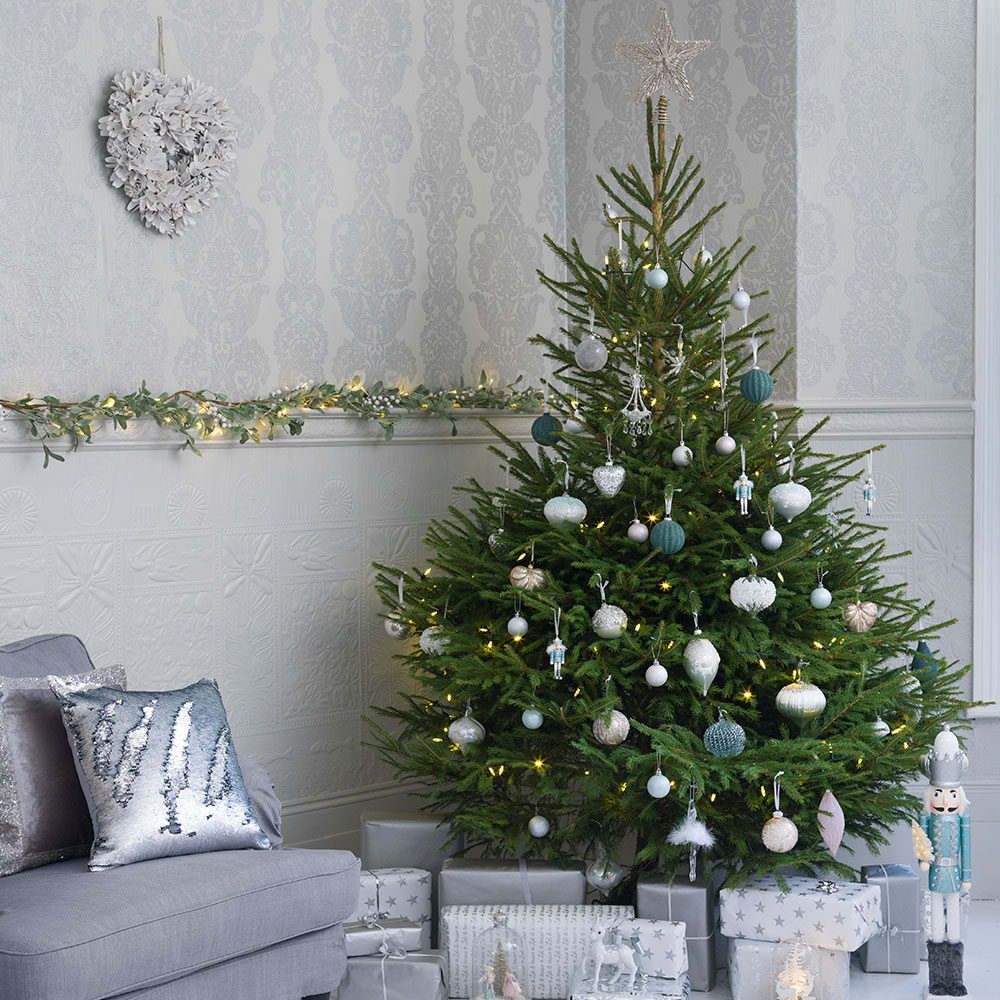
(Image credit: Future PLC)
So, you've chosen the type of real Christmas tree you want to buy, and headed on down to pick one up, but what are you even looking for?
The key is to choose a healthy tree - this will have a huge impact on how long it will last in your home, and how good it will look over the festive period.
'Picking a healthy tree that's in good condition for the holidays is really important and it can determine how well your tree looks throughout Christmas,' says Chris Bonnet, founder of GardeningExpress (opens in new tab). 'Checking the colour of the tree alone isn't really good enough in helping you to determine how fresh it is. Some sellers paint their trees so it's definitely worth doing some other things to check the freshness of the tree.'
Here are a few things you should try and keep in mind when hunting out the perfect healthy festive fir…
- Check the colour – 'The first and most obvious thing to check when buying your tree is the colour of it,' says Chris. 'Take a good look at the whole tree to check for any grey or brown colouring.'
- The drop test – 'Checking the needles of a tree is the best indication as to what sort of condition it's in and one way to test this is with the drop test,' advises Chris. 'Hold the tree a few inches above the ground and drop it, if quite a few needles fall off then the tree is not fresh. Not all trees are the same - the needles on a Norway Spruce tend to drop more so in this case the drop test might not be the best indication to how fresh the tree is. Another way to check the needles of a tree is to run your hands through the branches and see how many fall off,' adds Chris. 'It's common for some of the internal needles to fall off, but the exterior ones should remain intact.'
- Pick a tree partly in shade – 'Picking a tree that is already partly in shade means that it won't struggle to adapt when you move in doors since it's already been kept away from some sun,' adds Chris.
From cut to pot grown, Nordmann Fir to Norway Spruce, there's a brilliant variety of real Christmas trees to choose from' says Kamalvir Dhillon, category manager at B&Q.
Real Christmas trees vs fake trees
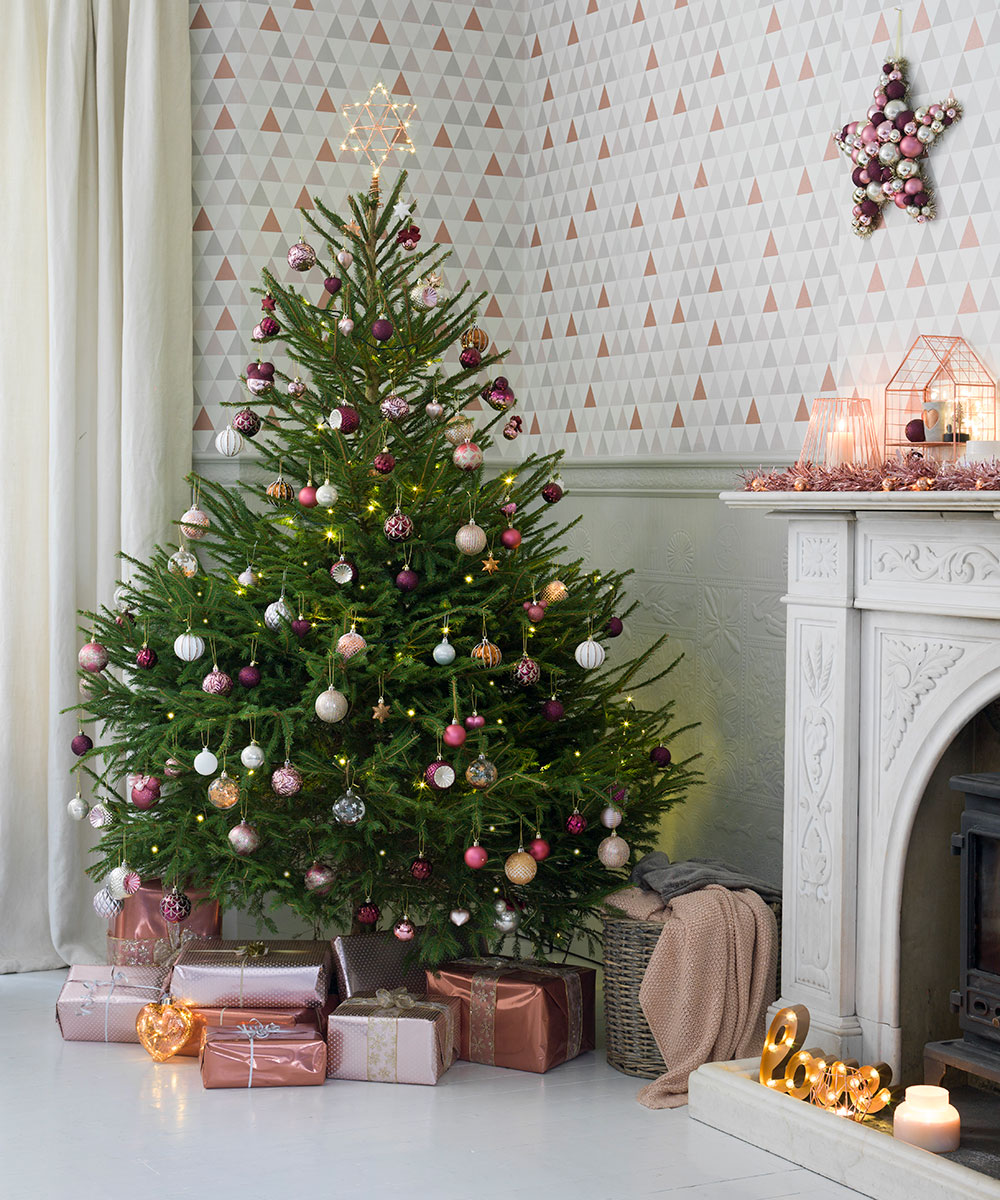
(Image credit: TBC)
Other than the gorgeous pine smell and luscious green look, their are loads of reasons to arrange your presents under a real tree rather than artificial alternatives:
- It's estimated that real trees use 10 times fewer materials and five times less energy than artificial trees.
- They are completely biodegradable and can be recycled and composted.
- If you buy a British grown tree you can guarantee that you are choosing a more sustainable option with a smaller carbon footprint than an artificial tree.
- Real trees are a renewable resource, at least one tree will be planted when one is harvested. At some plantations such as Infinity Christmas Trees they plant two new trees for every one harvested each year.
- Christmas tree plantations benefit the environment. The Infinity Christmas Trees plantations alone absorb 900 tonnes of CO2.
- Growing real Christmas trees provides jobs in rural areas, where employment can be hard to come by.
'Real Christmas trees are a sustainable, renewable resource with a much smaller carbon footprint than artificial ones. Especially when they are home-grown like ours,' explains Dave Brown, a Christmas tree grower of Infinity Christmas Trees.
'We plant two new trees for every one we harvest and each year. Our Christmas tree plantations across the UK absorb 900 tonnes of CO2, benefiting the environment.'
How to choose your real Christmas tree
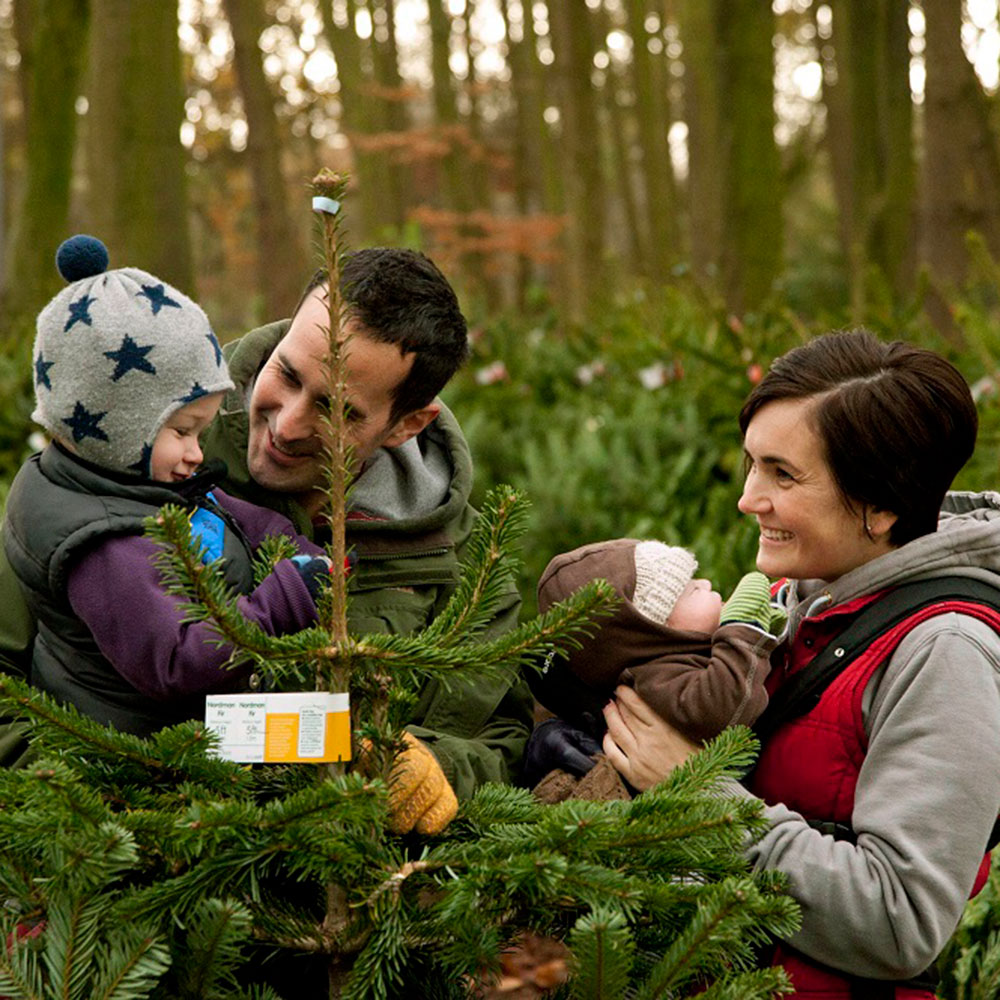
(Image credit: Forestry Commission, Crown Copyright)
Before you leave the house, measure the height of the room that you want the tree to fit into. Don't forget to factor in the height of the tree stand! You should also consider the width of the tree, which can vary wildly. 'That's why you should also never buy a Christmas tree ready-wrapped,' advises Craig Roman. 'When a tree is in the netting you don't know what you're getting. It could be too wide for your room or too uneven in shape.'
A cut tree should be fresh when purchased. Brush it gently with your fingers or tap it lightly on the ground – if it sheds lots of needles, it may be an old tree. Avoid any brittle branches and dull needles. 'Like cats and dogs, you can tell if trees are healthy by the sheen of their coat,' adds Craig. 'Ideally, the tree should be a shiny, glossy green.'
Also, choose a tree that isn't pre-wrapped in netting,' advises Wyevale Garden Centres' Mark Sage. 'This allows you to really see the shape and ensure branches aren't bent into an upwards position.'
'Trees left in netting aren't able to benefit from air circulation and begin to form a micro-climate. This means the tree begins to warm up, drop needles and decompose at a much quicker rate.'
To make sure you are getting a British grown tree that meets strict freshness standards look for a Grown in Britain logo, a non profit organisation champions home-grown forest products and plants.
Getting it home – first steps
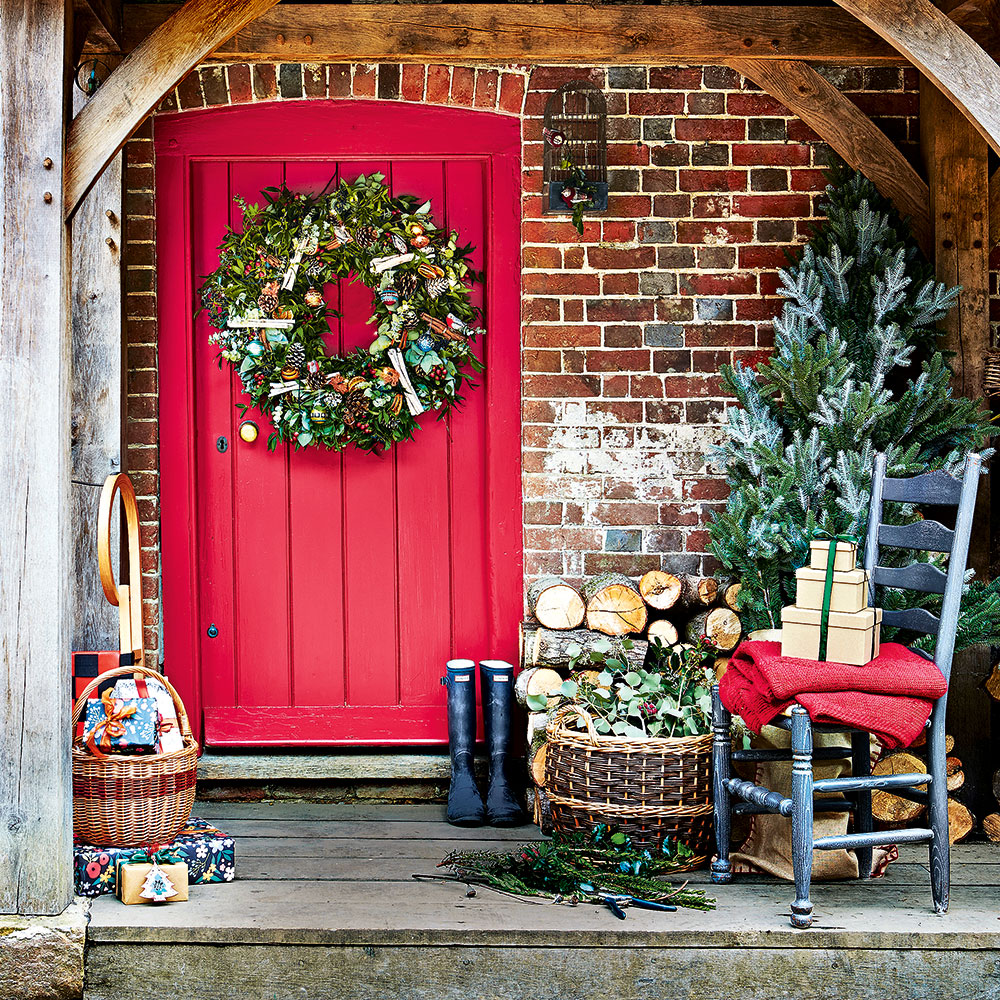
(Image credit: Future PLC/ Rachel Whiting)
Cut off the netting to allow the branches to settle, and saw off about half an inch (2.5cm) from its base in order to open up its pores – just as you would do with fresh flowers. 'Sap will have formed at the bottom of the trunk from the first trim in an attempt to heal the tree's wound,' says Chris Bonnet. 'Giving it another trim before placing it in water will remove this, allowing for a much better water consumption.'
Next, put it in a bucket of water and keep it outside in a shady, sheltered spot until you're ready to bring it indoors. Just before you carry it into the house, give it another gentle tap to shed any loose needles.
Once inside, stand your tree in a container that you can top up with water to help it last longer. You may be surprised by the amount of water it will drink!
Caring for real Christmas trees
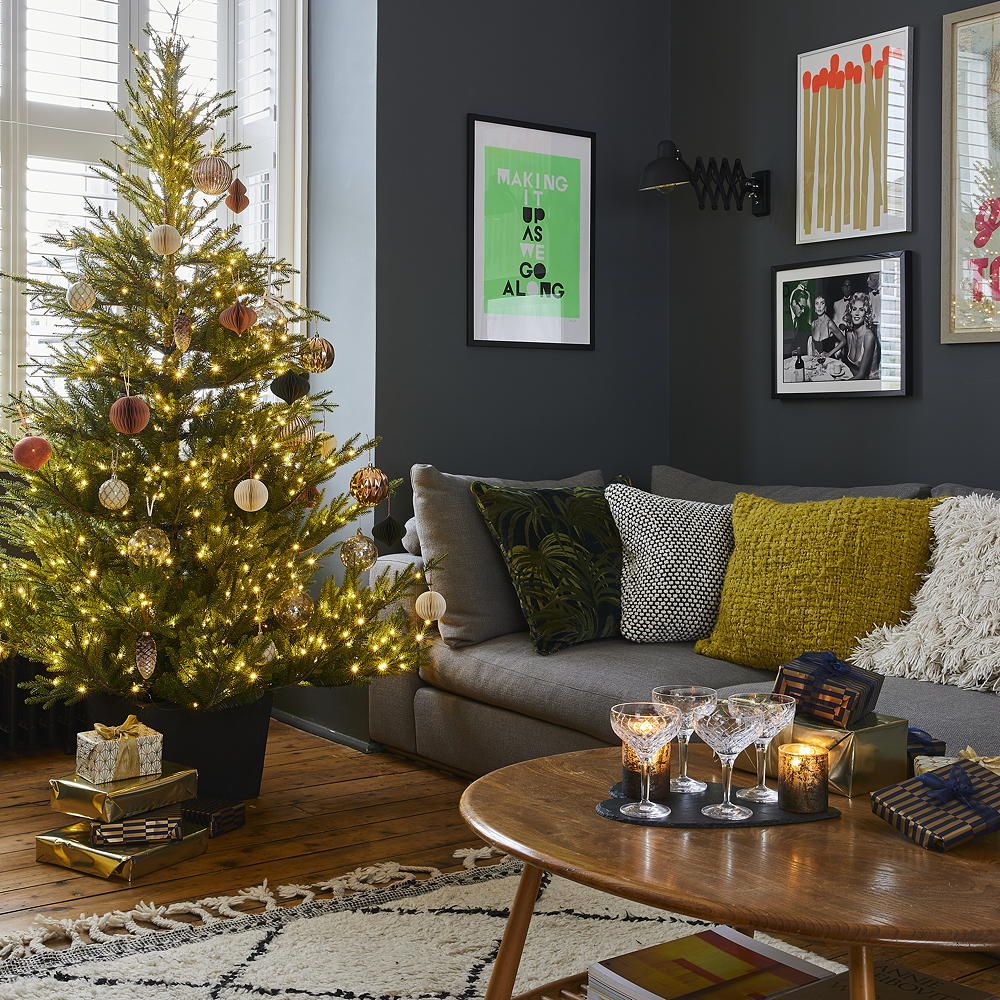
(Image credit: Future PLC)
One thing that can put people off about buying a real Christmas tree is the worry that they won't last throughout the season as well as artificial ones - not appearing as bright and healthy. But don't fret, because we've spoken to the experts to find out exactly how you can keep your Christmas centrepiece lovely and lush.
Firstly, remember that the earlier you put your tree up, the higher the risk that it won't look as fresh by the time the 25th rolls around. 'The first week of December is ideal, as long as you care for your tree properly, keep it away from too much heat and give it enough water, there's no reason it won't stay looking fresh,' says Chris Bonnet.
Healthy cut trees last about four weeks, so after that you have to consider when to take your Christmas tree down.
Treat your tree like you would an expensive bunch of flowers, and be mindful of how day to day things might affect it. For example - heat and light. Avoid putting the tree too close to the fireplace or any radiators, as this will cause it to dry out quicker. Chris advises putting the tree somewhere where it can get a few hours of natural light each day, and to spritz it regularly for extra hydration.
As for the Christmas lights themselves, consider LED lights instead, which won't dry the branches out as much. ALWAYS remember to turn off your lights before going to bed.
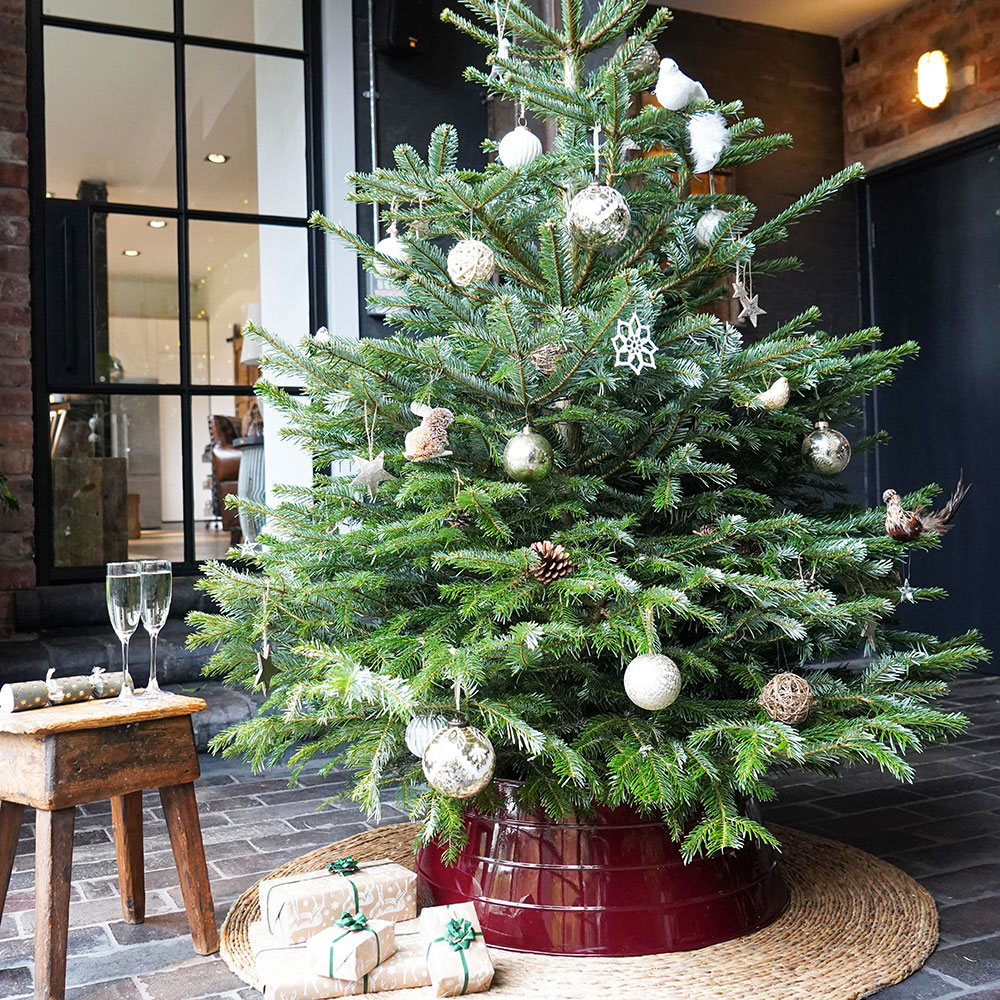
(Image credit: Future PLC/Lime Lace)
Every plant needs water to stay healthy, so Chris says to check the water level daily. 'You might be surprised by how much water your tree will consume,' he says. 'They can drink up to several litres of water in the first couple of weeks. Christmas trees will typically consume around one to two litres of water a day so make sure you keep an eye on water levels and top this up when necessary.'
But did you know they drink more than water? Gardening guru David Domoney revealed the secret to a keeping your real tree is full-fat lemonade?!
Who knew Christmas trees were the real secret lemonade drinkers? David explains how lemonade is the secret drink to keep real trees looking fresh. 'You can use florist's cut flower food, or you can just mix up some sugar water or full-fat lemonade' he explains.
'Because it's an element of food within. You'd be surprised just how much water the tree takes up' he goes on to explain. 'So adding a little bit of food keeps them looking fresher.'
Always make sure your tree trunk is immersed in water. Ideally try to top it up every day, as trees are thirsty fellows! Experts reveal the average Christmas tree can drink up to 1-2 litres of water a day!
'A little known tip - it's key to keep your tree away from any fruit bowls in the home,' reveals B&Q's Kamalvir Dhillon. 'Although they may be a staple during the festive period, fruit gives off ethylene gas which affects plants and trees, making needles drop quicker.' Who knew? Banish the fruit bowl – stick to the chocolate instead.
How to decorate your real tree
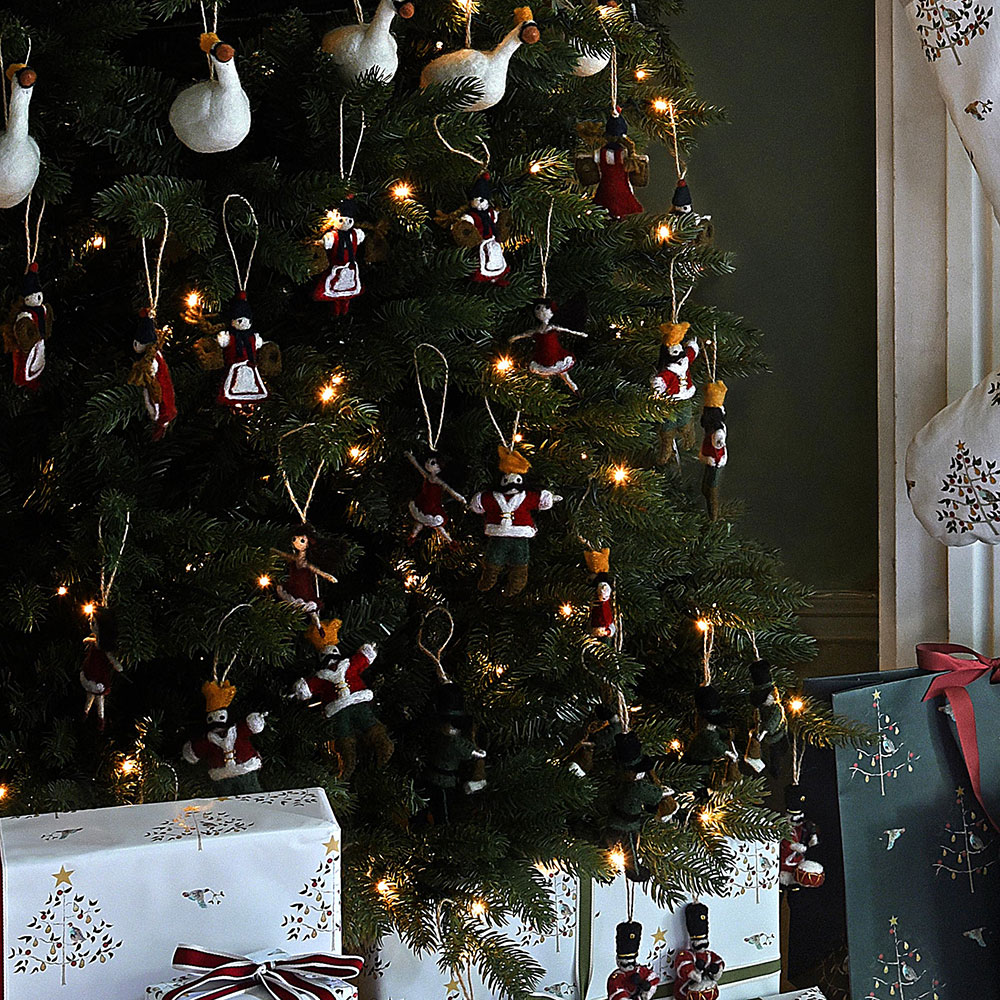
(Image credit: Future PLC/Sophie Allport)
Woohoo, it's time for the fun bit! However, preparation is everything. Before you even think about touching a bauble, secure the tree in its holder or pot. Avoid whittling the trunk of a tree to fit a stand - this can remove the most active cells from the outside of the trunk and make the tree thirsty.
We always want a perfect looking tree, and wonder how to decorate a Christmas tree professionally, so follow these simple guidelines. Add any strings of lights, making sure to start at the bottom.
Next, add your tree topper - this will only get more difficult once you have baubles to work around. After this, move on to the ornaments. Organise them by size, and hang the biggest baubles on the larger branches, and smaller trinkets on the more delicate sprigs.
'On my own trees, I always fix the decorations to the tree with wire, rather than string,' says Craig Roman. 'This means I can completely control where they sit, rather than rely on where they hang.'
Real Christmas trees vs artificial trees
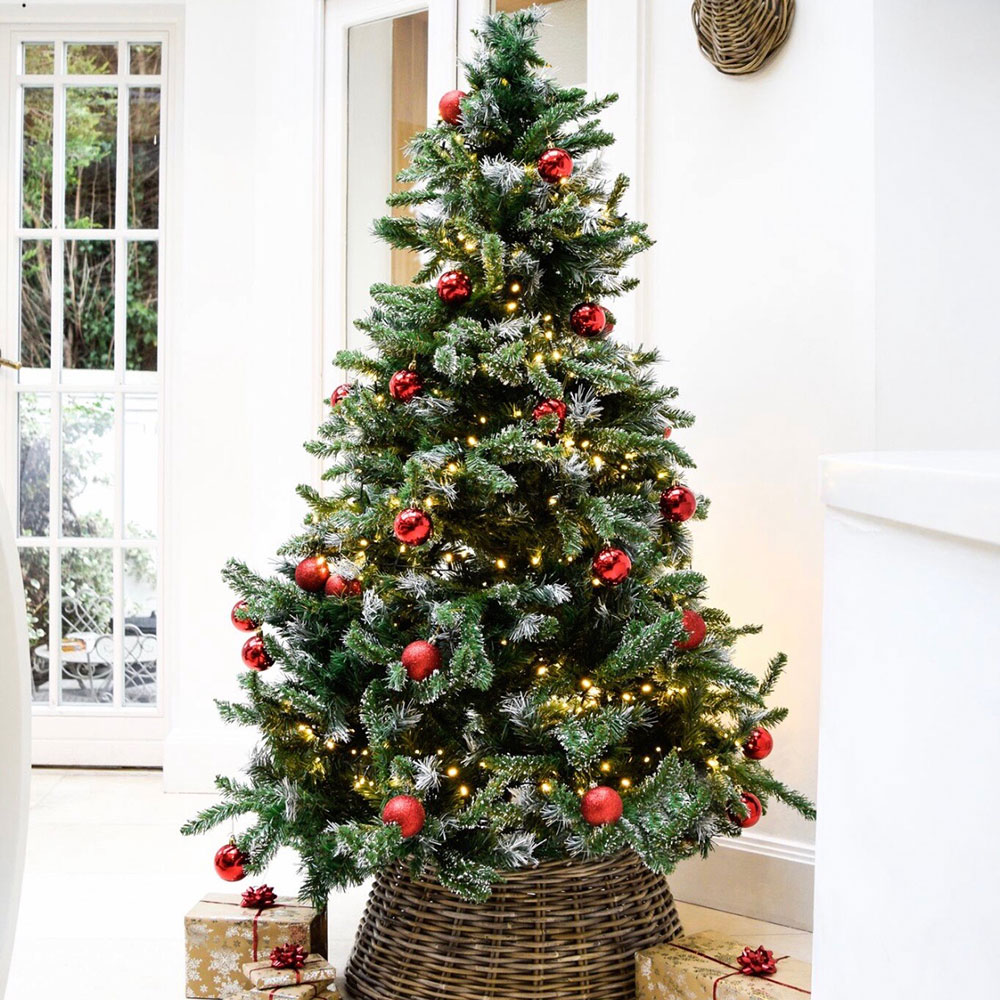
(Image credit: Future PLC/Charlton Island)
Other than the gorgeous pine smell and luscious green look, there are plenty of reasons to arrange your presents under a real tree rather than artificial alternatives:
- It's estimated that real trees use 10 times fewer materials and five times less energy than artificial trees.
- They are completely biodegradable and can be recycled and composted.
- If you buy a British grown tree you can guarantee that you are choosing a more sustainable option with a smaller carbon footprint than an artificial tree.
- Real trees are a renewable resource, at least one tree will be planted when one is harvested. At some plantations such as Infinity Christmas Trees (opens in new tab) they plant two new trees for every one harvested each year.
- Christmas tree plantations benefit the environment. The Infinity Christmas
- Trees plantations alone absorb 900 tonnes of CO2.
- Growing real Christmas trees provides jobs in rural areas, where employment can be hard to come by.
'Real Christmas trees are a sustainable, renewable resource with a much smaller carbon footprint than artificial ones. Especially when they are home-grown like ours,' explains Dave Brown, a Christmas tree grower of Infinity Christmas Trees.
'We plant two new trees for every one we harvest and each year. Our Christmas tree plantations across the UK absorb 900 tonnes of CO2, benefiting the environment.'
So it's a win-win. Not only will you have a beautiful - and healthy! - real Christmas tree this winter, but you'll be making the planet just as a happy as a kid on, well, Christmas!
Real or faux, what's your preference?
Source: https://www.idealhome.co.uk/christmas-ideas/real-christmas-trees-how-to-choose-decorate-and-look-after-them-187928

0 Response to "Chubby Woman in Dress in Front of Christmas Tree"
Post a Comment